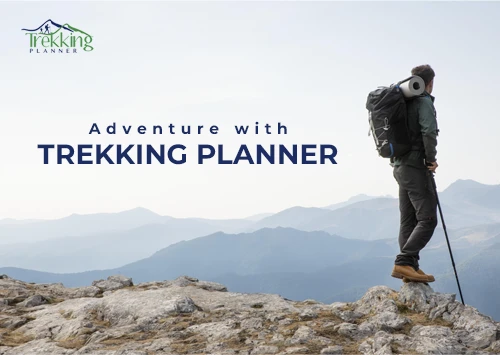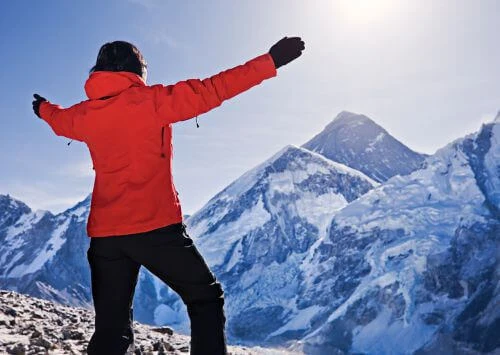The Geography and Climate of the Himalayas
The Himalayas, often referred to as the "roof of the world," span several countries, including Nepal, India, Bhutan, and Tibet. These majestic mountains are formed by the collision of the Indian and Eurasian tectonic plates, resulting in some of the tallest peaks on earth.
The geography of the Himalayas is diverse, ranging from snow-capped mountains to deep valleys, winding rivers, and lush forests. The region boasts a wide range of flora and fauna, making it a haven for nature enthusiasts. From rare orchids to elusive snow leopards, the Himalayas have a rich biodiversity that captivates visitors.
The climate in the Himalayas varies depending on the altitude. The weather is relatively mild in the lower valleys, with warm summers and cool winters. As you ascend higher into the mountains, the temperature drops significantly, and the air becomes thinner. It is essential to acclimatize correctly to avoid altitude sickness when trekking in the Himalayas.
Popular Trekking Routes in the Himalayas
Trekking in the Himalayas is a once-in-a-lifetime experience that allows you to immerse yourself in the region's stunning natural beauty. Nepal offers many trekking routes catering to all levels of fitness and experience.
One of Nepal's most popular trekking routes is the Everest Base Camp Trek. This iconic trek takes you through picturesque Sherpa villages, towering glaciers, and breathtaking mountain vistas. The highlight of the trek is reaching Everest Base Camp, where you can witness the awe-inspiring sight of Mount Everest up close.
Another popular trekking route is the Annapurna Circuit. This trek takes you around the Annapurna massif, offering stunning views of snow-capped peaks, terraced fields, and charming villages. The trek also takes you through the world's deepest gorge, the Kali Gandaki, and the sacred Muktinath temple.
The Langtang Valley Trek is an excellent option for those seeking a shorter trek. This trek takes you through the Langtang National Park, known for its diverse wildlife and pristine forests. You can spot rare species such as the red panda and the Himalayan tahr.
Must-Visit Destinations in the Himalayas of Nepal
Several must-visit destinations should not be missed when visiting the Himalayas in Nepal. One such destination is Kathmandu, the capital city of Nepal. Kathmandu is a vibrant and bustling city known for its rich history, ancient temples, and lively markets. Explore the old town's narrow lanes, visit the UNESCO World Heritage Sites of Kathmandu Durbar Square and Pashupatinath Temple, and indulge in the local cuisine.
Another must-visit destination is Pokhara, a scenic lakeside town located at the base of the Annapurna range. Pokhara offers stunning views of the Himalayas, with the majestic Machhapuchhre (Fishtail) peak dominating the skyline. For a truly unforgettable experience, take a boat ride on Phewa Lake, visit the World Peace Pagoda, and embark on a paragliding adventure.
If you're interested in exploring the spiritual side of the Himalayas, a visit to Lumbini is a must. Lumbini is the birthplace of Lord Buddha and is considered one of the holiest sites for Buddhists worldwide. Explore the sacred gardens, visit the Maya Devi Temple, and immerse yourself in the peaceful ambiance of this spiritual oasis.
Tips for Preparing and Packing for a Himalayan Trek
Preparing for a Himalayan trek requires careful planning and packing. Here are some essential tips to ensure a safe and enjoyable trekking experience:
- Physical Fitness: Trekking in the Himalayas can be physically demanding, so being in good physical condition is important. Start a fitness routine a few months before your trek, focusing on cardiovascular exercises and strength training.
- Packing Essentials: Pack lightweight and breathable clothing suitable for warm and cold weather conditions. Don't forget to bring a good pair of trekking boots, a warm sleeping bag, a backpack, a waterproof jacket, a hat, sunglasses, and sunscreen.
- Acclimatization: Proper acclimatization to the altitude is crucial to avoid altitude sickness. Take your time and ascend gradually, allowing your body to adjust to the thin air. Stay hydrated and listen to your body's signals.
- Trekking Permits: Before embarking on your trek, make sure to obtain the necessary permits. The Annapurna and Everest regions require trekking permits, which can be obtained through registered trekking agencies.
- Hiring a Guide or Porter: Consider hiring a local guide or porter to accompany you on your trek. They have valuable knowledge about the region, can help with navigation, and can lighten your load, allowing you to enjoy the experience fully.
Safety should always be a top priority when trekking in the Himalayas. Be prepared for changes in weather conditions, follow your guide's instructions, and respect the local culture and environment.
Safety Precautions and Considerations for Trekking in the Himalayas
Trekking in the Himalayas can be an exhilarating and rewarding experience, but it is essential to prioritize safety at all times. Here are some safety precautions and considerations to keep in mind:
- Weather Conditions: The weather in the Himalayas can be unpredictable, with sudden changes in temperature and the possibility of snowfall even during the summer months. Stay updated on weather forecasts and be prepared for all weather conditions.
- Altitude Sickness: Altitude sickness, also known as acute mountain sickness (AMS), can occur when ascending to high altitudes too quickly. Symptoms include headache, dizziness, nausea, and difficulty breathing. If you experience these symptoms, descend to a lower altitude immediately.
- Hydration and Nutrition: Proper hydration and nutrition are essential when trekking in the Himalayas. Even if you don't feel thirsty, drink plenty of water and consume nutritious meals to keep your energy levels up.
- Environmental Considerations: The Himalayas are a fragile ecosystem, and minimizing your environmental impact is essential. Follow the principles of Leave No Trace, dispose of waste properly, and respect the local flora and fauna.
- Emergency Communication: Make sure to carry a fully charged mobile phone with a local SIM card and emergency contact numbers. In case of an emergency, you can call for help or ask your guide for assistance.
By considering these safety precautions and considerations, you can ensure a safe and enjoyable trekking experience in the Himalayas.
The Rich Culture and Traditions of the Himalayan Region
The Himalayan region is known for its breathtaking landscapes and rich culture and traditions. The diverse ethnic groups that inhabit the region have unique customs, festivals, and rituals that have been passed down through generations.
Nepal, in particular, is home to a vibrant mix of cultures, with most of the population being Hindu or Buddhist. Visit monasteries, temples, and religious sites to witness the spiritual practices of the locals. Participate in traditional ceremonies, such as lighting butter lamps or spinning prayer wheels, to gain a deeper understanding of the local customs.
The cuisine of the Himalayan region also reflects its cultural diversity. Indulge in traditional Nepali dishes such as Momo (dumplings), dal bhat (rice and lentils), and gundruk (fermented leafy greens). Each region has its unique culinary specialties that are sure to tantalize your taste buds.
Don't forget to interact with the locals and learn about their way of life. The people of the Himalayas are known for their warm hospitality and will be more than happy to share their stories and traditions with you.
Wildlife and Nature Conservation Efforts in the Himalayas
The Himalayas are a haven for adventure enthusiasts and wildlife and nature lovers. The region is home to several endangered species, including the snow leopard, red panda, Himalayan musk deer, and Bengal tiger.
Various conservation organizations and national parks have been established to protect the delicate ecosystem of the Himalayas. These organizations work tirelessly to preserve the region's biodiversity and promote sustainable tourism practices.
When visiting the Himalayas, support conservation efforts by following responsible tourism practices. Respect wildlife habitats, avoid littering, and support local initiatives that promote conservation and sustainable development.
Best Time to Visit the Himalayas in Nepal
The best time to visit the Himalayas in Nepal depends on the specific region and the activities you wish to engage in. Generally, the spring (March to May) and autumn (September to November) are considered the best times for trekking in the Himalayas.
The weather is mild during the spring season, with clear skies and blooming rhododendron forests. This is an excellent time to witness the vibrant colors of the Himalayas and enjoy panoramic views of the snow-capped peaks.
The autumn season is also highly recommended for trekking, as the weather is stable, and the visibility is excellent. The skies are generally clear, offering breathtaking views of the mountains, and the temperatures are moderate.
It is important to note that the winter months (December to February) can be frigid in the higher altitudes, and the monsoon season (June to August) brings heavy rainfall, making trekking more challenging. However, these seasons can still be a great time to visit if you are well-prepared and have specific interests such as wildlife photography or cultural experiences.
Conclusion: A Glimpse into the Awe-Inspiring Beauty of the Himalayas
As we come to the end of our journey through the enchanting mountains of Nepal, it is clear that the Himalayas offer an unparalleled experience for travelers. From the breathtaking landscapes to the rich culture and traditions, this region is a treasure trove waiting to be explored.
Whether you embark on a thrilling trek to Everest Base Camp, immerse yourself in the spiritual ambiance of Lumbini, or simply soak in the majestic beauty of the Himalayas from a lakeside town, Nepal has something to offer everyone.
So pack your bags, lace up your boots, and prepare to embark on an adventure of a lifetime in the mesmerizing Himalayas of Nepal. Allow yourself to be captivated by the awe-inspiring beauty, immerse yourself in the rich culture, and create memories that will last a lifetime. The Himalayas are waiting to be discovered, and the journey begins now.
Happy exploring!





